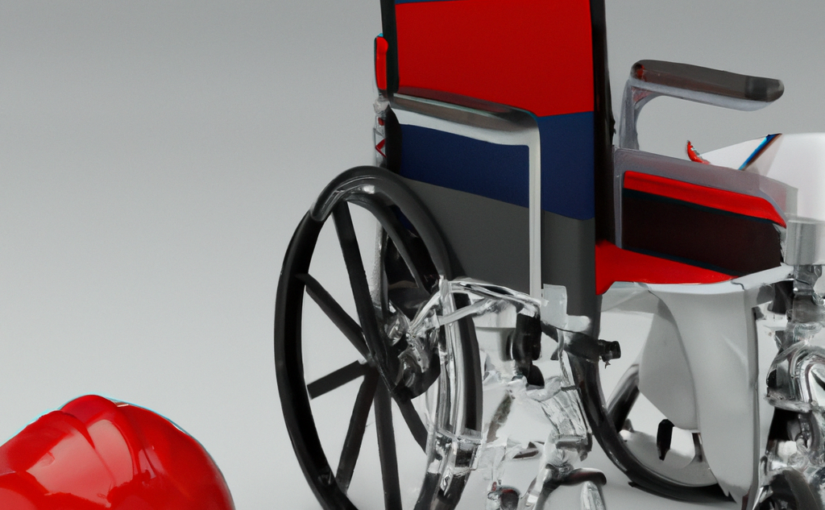Last Updated on June 1, 2023
The COVID-19 pandemic has had a significant impact on people’s lives, and for injured workers who have been prescribed opioids as part of their treatments, social isolation and other pandemic-related stressors can exacerbate the risk of opioid misuse and drive up the cost of workers’ compensation claims.
- Opioids are a class of drugs that are used to treat pain, but they can also be addictive.
- In 2020, 34 percent of all workers’ compensation claims with prescriptions had at least one prescription for opioids.
- The COVID-19 pandemic has had a significant impact on people’s lives, and can make it more difficult for people to cope with pain and can increase the risk of opioid misuse.
- There are a number of things that can be done to reduce the risk of opioid misuse, including:
- Educating patients about the risks of opioids
- Prescribing opioids only when necessary
- Monitoring patients closely
- Providing patients with access to treatment
Opioids and Workers Compensation
The risks of opioid misuse and the impact of social isolation and other pandemic-related stressors on injured workers who have been prescribed opioids as part of their treatments:
Opioids are a class of drugs that are used to treat pain. They are very effective at relieving pain, but they can also be addictive. In 2020, 34 percent of all workers’ compensation claims with prescriptions had at least one prescription for opioids, based on CDC-collected data. This means that millions of workers are being prescribed opioids each year.
Opioids can be a safe and effective way to treat pain, but they must be used carefully. If not used correctly, opioids can lead to addiction, overdose, and death.
The Risks of Opioid Misuse
There are many risks associated with opioid misuse. Some of the most common risks include:
- Addiction: Opioids are highly addictive. This means that people who take opioids can become addicted to them, even if they only take them for a short period of time.
- Overdose: Opioids can be fatal if they are taken in too high of a dose. In 2020, there were over 70,000 opioid overdose deaths in the United States.
- Death: Opioids can also lead to death if they are taken in combination with other drugs, such as alcohol or benzodiazepines.
The Impact of Social Isolation and Other Pandemic-Related Stressors
The COVID-19 pandemic has had a significant impact on people’s lives. Many people have been forced to work from home, isolate themselves from friends and family, and deal with the stress of the pandemic. These stressors can make it more difficult for people to cope with pain and can increase the risk of opioid misuse.
How to Reduce the Risk of Opioid Misuse
There are a number of things that can be done to reduce the risk of opioid misuse. Some of the most important things include:
- Educating patients about the risks of opioids: Patients should be educated about the risks of opioids, including the risk of addiction, overdose, and death.
- Prescribing opioids only when necessary: Opioids should only be prescribed when necessary. There are many other effective treatments for pain, such as physical therapy, exercise, and non-steroidal anti-inflammatory drugs (NSAIDs).
- Monitoring patients closely: Patients who are prescribed opioids should be monitored closely for signs of addiction and overdose.
- Providing patients with access to treatment: Patients who are struggling with opioid addiction should have access to treatment, such as medication-assisted treatment (MAT) and counseling.
FAQ
Is opioid use disorder considered a disability?
Yes, opioid use disorder is considered a disability under Section 504 of the Rehabilitation Act, the Americans with Disabilities Act (ADA), and Section 1557 of the Affordable Care Act when the drug addiction substantially limits a major life activity¹²³.
Source:
(1) Drug Addiction and Federal Disability Rights Laws Fact Sheet — HHS.gov. https://www.hhs.gov/sites/default/files/drug-addiction-aand-federal-disability-rights-laws-fact-sheet.pdf.
(2) Opioid Use Disorder | ADA.gov. https://www.ada.gov/topics/opioid-use-disorder/.
(3) Use of Codeine, Oxycodone, and Other Opioids: Information for Employees. https://www.eeoc.gov/laws/guidance/use-codeine-oxycodone-and-other-opioids-information-employees.
Is opioid use disorder considered a disability under Workers Comp?
It depends on the circumstances. If the court acknowledges a superseding cause, workers’ compensation will not cover the damages. However, circumstances do exist where workers’ compensation might be responsible for the cost of opioid addiction treatments¹³.
Source:
(1) Are Opioid Overdoses Covered by Workers’ Compensation?. https://www.sweeneymerrigan.com/opioid-lawsuits/are-opioid-overdoses-covered-by-workers-compensation/.
(2) ADA Protects Workers in Treatment and Recovery for Opioid Use — SHRM. https://www.shrm.org/resourcesandtools/legal-and-compliance/employment-law/pages/ada-protects-workers-in-treatment-and-recovery-for-opioid-use.aspx.
(3) A Public Health Approach to Protecting Workers from Opioid Use Disorder …. https://www.apha.org/policies-and-advocacy/public-health-policy-statements/policy-database/2021/01/13/protecting-workers-from-opioid-use-disorder.
(4) Use of Codeine, Oxycodone, and Other Opioids: Information for Employees. https://www.eeoc.gov/laws/guidance/use-codeine-oxycodone-and-other-opioids-information-employees.
Conclusion
Opioids can be a safe and effective way to treat pain, but they must be used carefully. If not used correctly, opioids can lead to addiction, overdose, and death. The COVID-19 pandemic has had a significant impact on people’s lives and can make it more difficult for people to cope with pain and can increase the risk of opioid misuse.
There are a number of things that can be done to reduce the risk of opioid misuse, including educating patients about the risks of opioids, prescribing opioids only when necessary, monitoring patients closely, and providing patients with access to treatment.
If you have been injured on the job and have been prescribed opioids, it is important to be aware of the risks of opioid misuse and to take steps to reduce your risk. You should also talk to your doctor about your pain management options and about ways to reduce your risk of opioid misuse.

